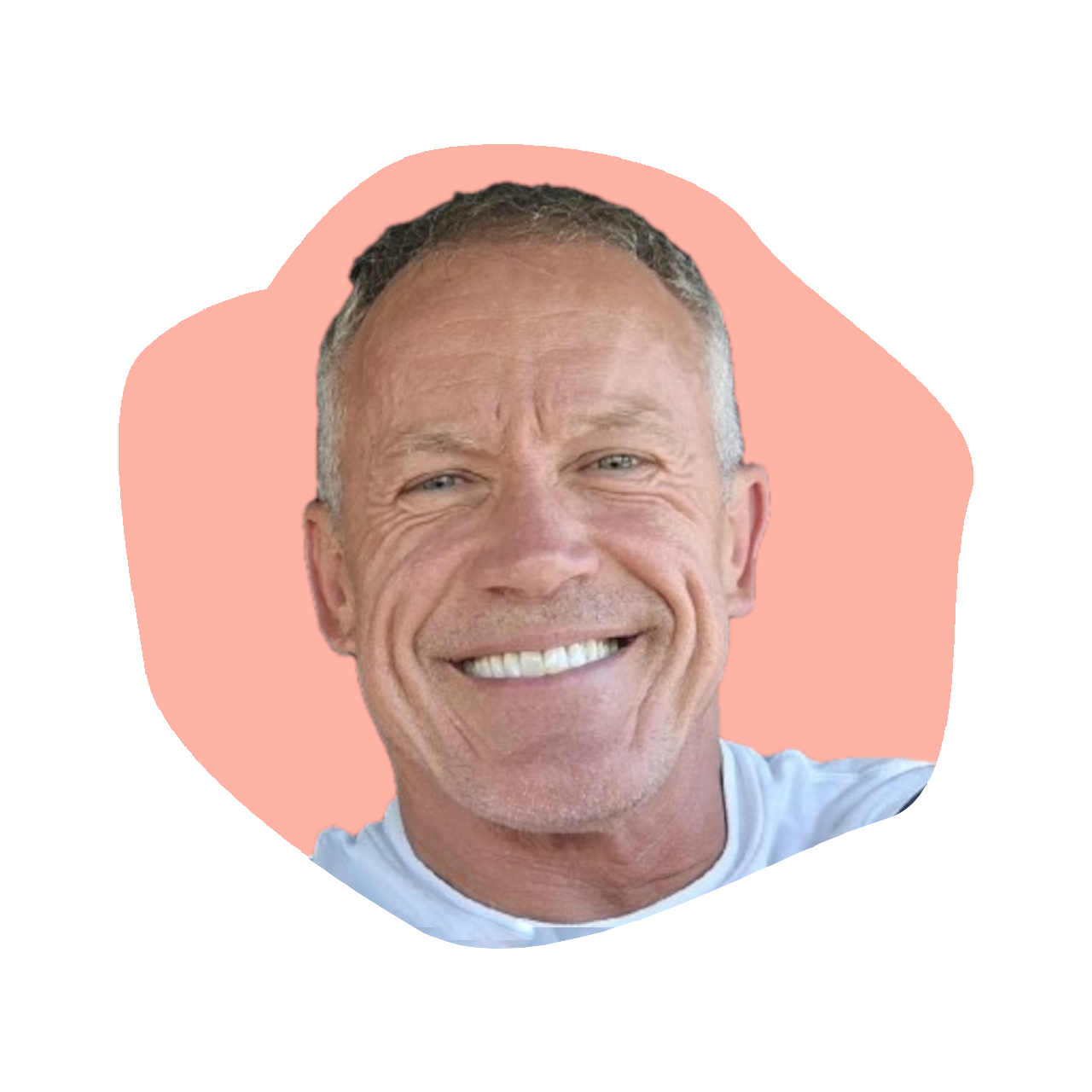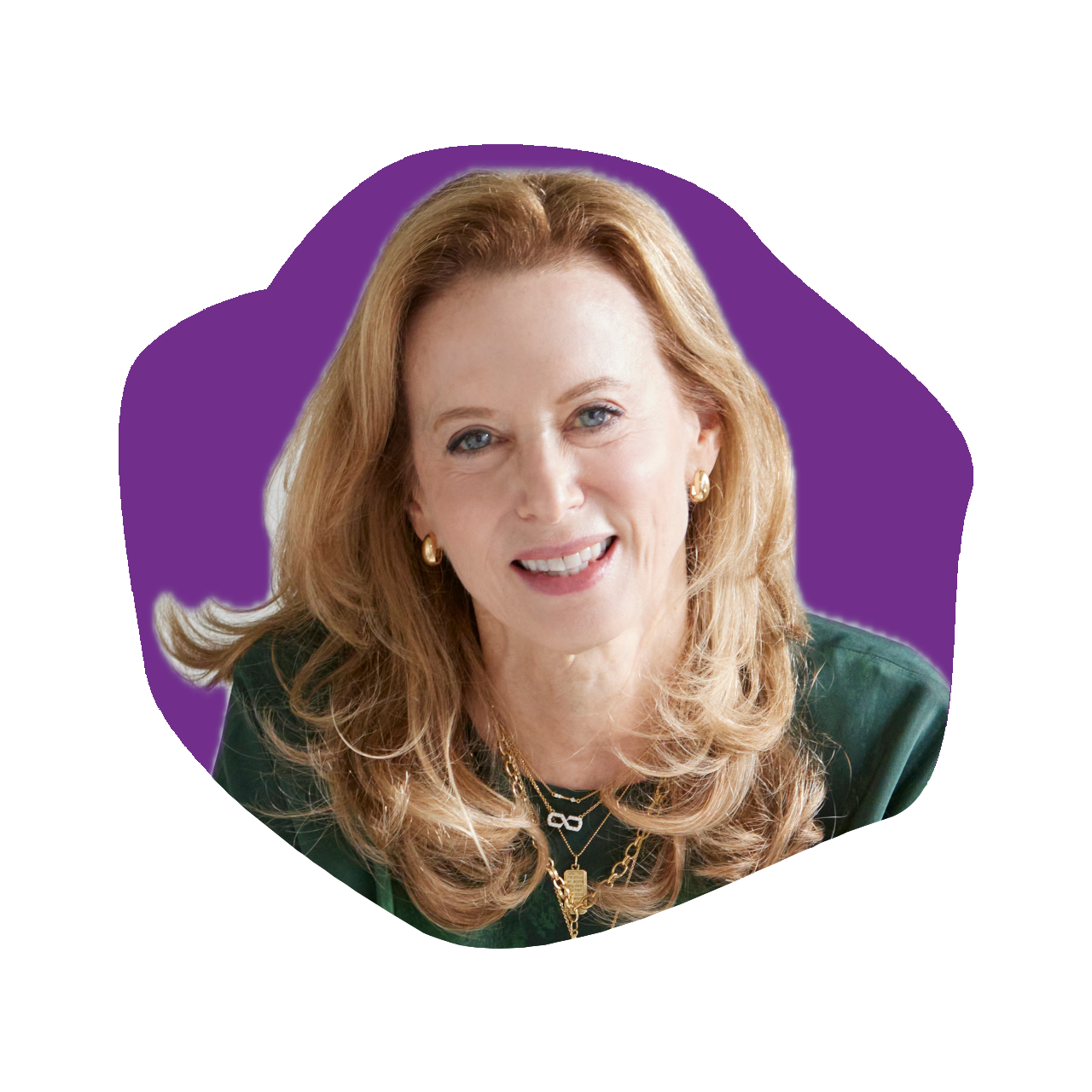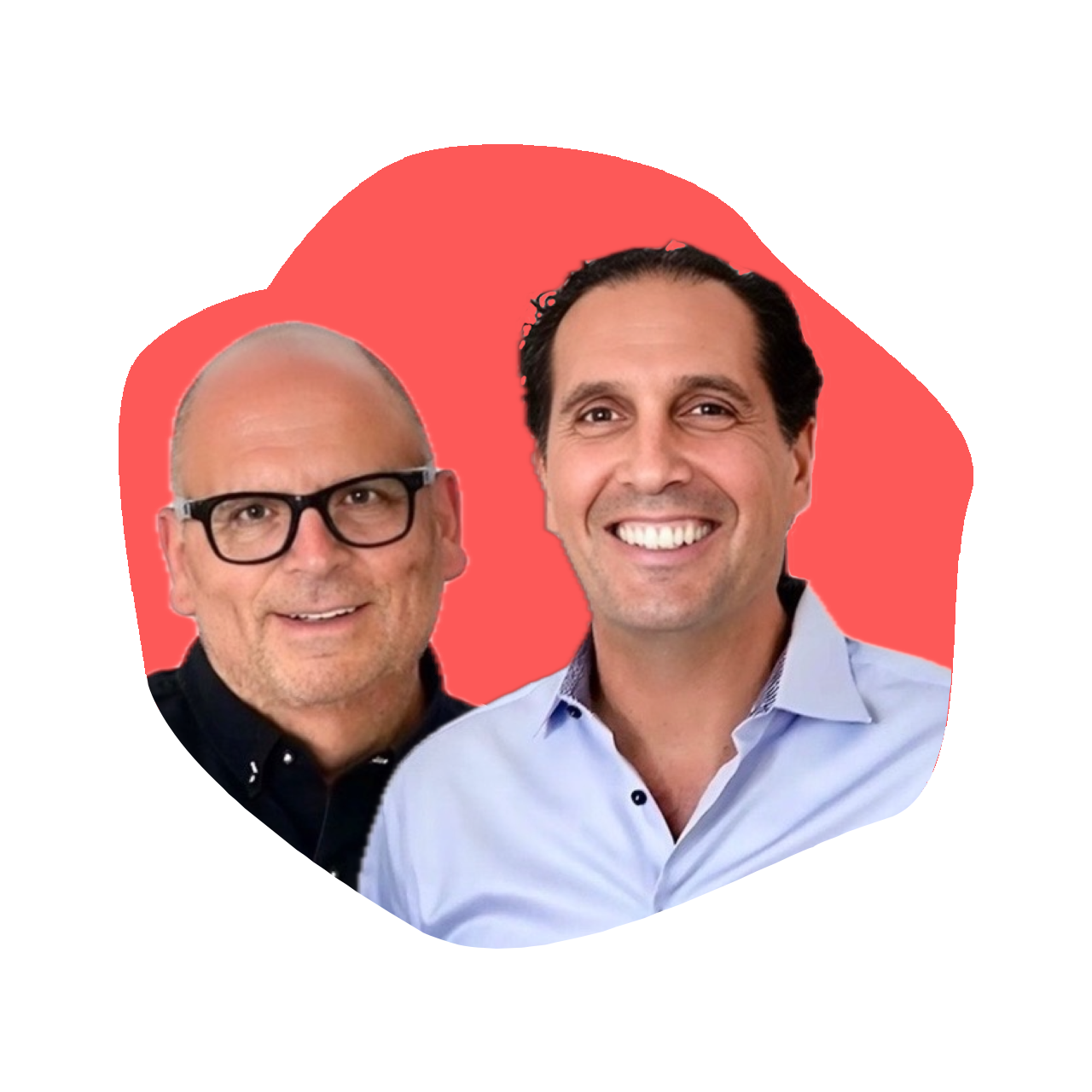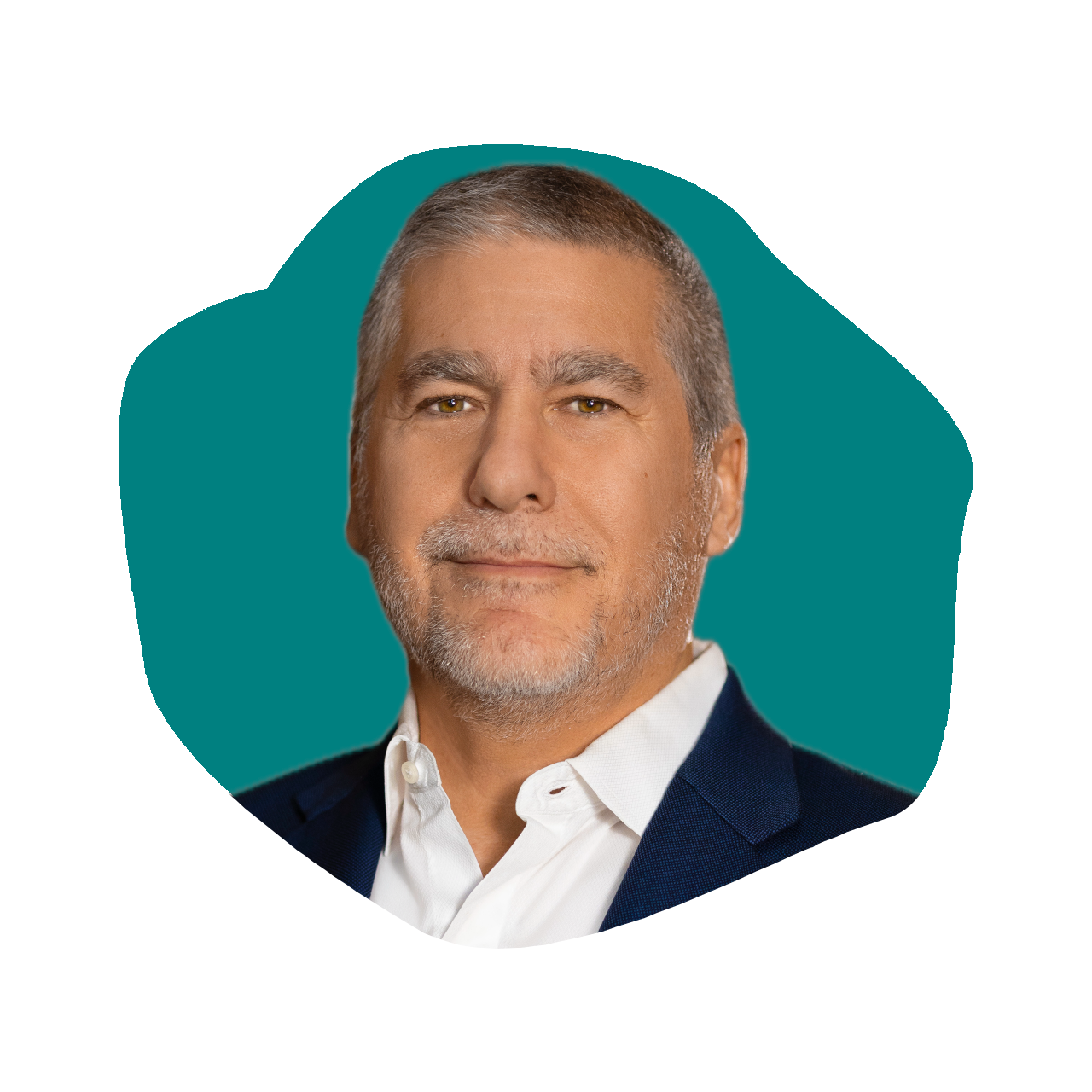Karen Eber: Author of The Perfect Story
Episode 446
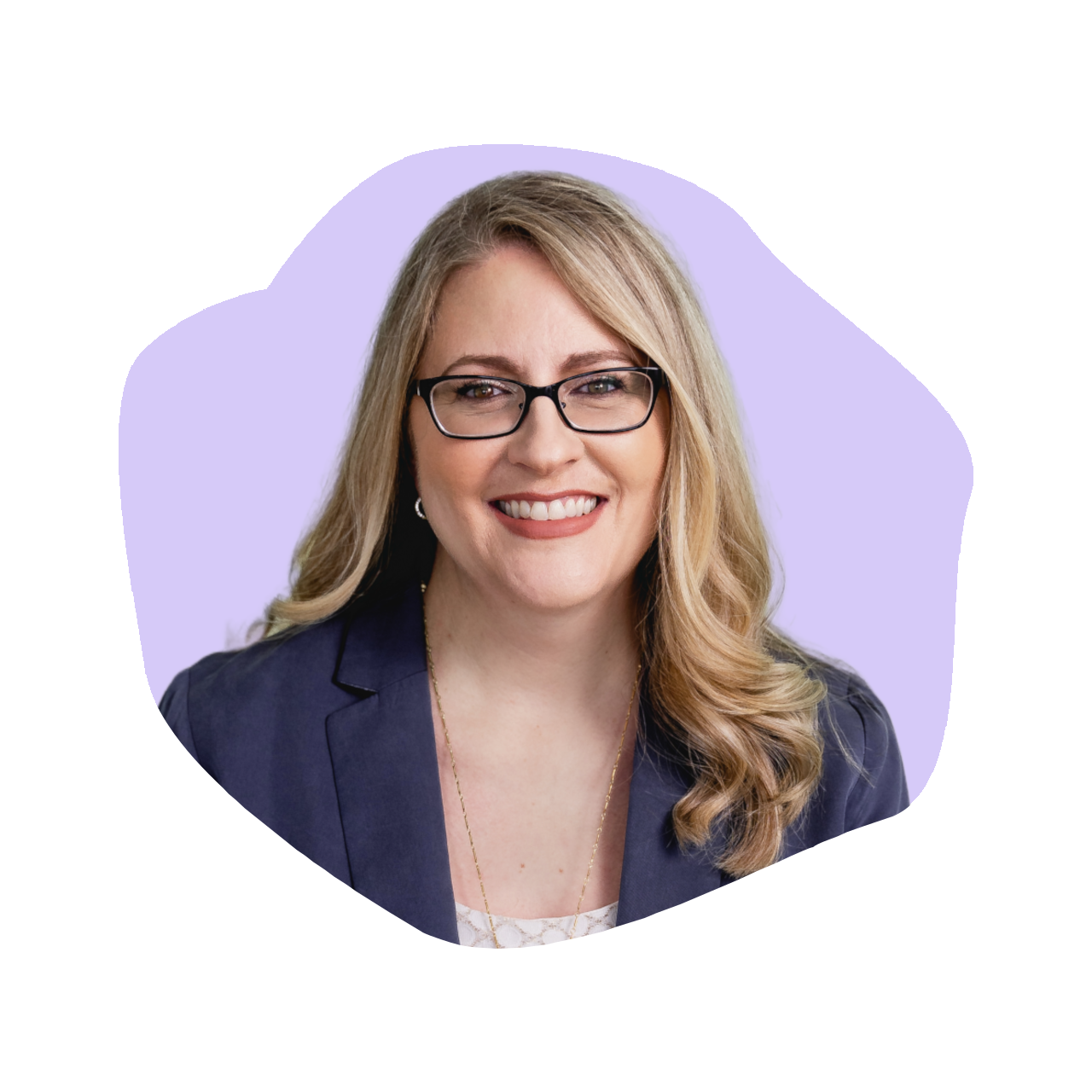
On today’s episode, Karen Eber, Author of the terrific new book The Perfect Story, sits down with Kara Goldin to discuss her journey as well as storytelling. We dive into the science of storytelling, how it can shape culture in an organization and hear why great leaders, and managers, need to be using stories as tools. Karen has had an amazing career and is herself a passionate leader, and storyteller, with over 20 years of experience in various senior level roles in companies including HP, Deloitte and General Electric. And today, she is the CEO at Eber Leadership Group. Whether you are looking to better your storytelling or start to use stories to begin with, The Perfect Story is packed with practical tips and inspiring stories examples as to why this is a good thing to do. This is a not-to-be-missed episode that will have you thinking about YOUR perfect story. You don’t want to miss this episode. Now on #TheKaraGoldinShow.
Resources from
this episode:
Enjoying this episode of #TheKaraGoldinShow? Let Kara know by clicking on the links below and sending her a quick shout-out on social!
Follow Kara on LinkedIn – Instagram – X – Facebook – TikTok – YouTube – Threads
Have a question for Kara about one of our episodes? Reach out to Kara directly at [email protected]
To learn more about Karen Eber and The Perfect Story:
https://www.linkedin.com/in/kareneber/
https://www.kareneber.com/book
https://www.instagram.com/kareneber1
https://www.twittter.com/kareneber1
https://www.kareneber.com
Transcript
Kara Goldin 0:00
I am unwilling to give up that I will start over from scratch as many times as it takes to get where I want to be I want to be, you just want to make sure you will get knocked down. But just make sure you don’t get knocked down knocked out. So your only choice should be go focus on what you can control control control. Hi, everyone and welcome to the Kara Goldin show. Join me each week for inspiring conversations with some of the world’s greatest leaders. We’ll talk with founders, entrepreneurs, CEOs, and really some of the most interesting people of our time. Can’t wait to get started. Let’s go. Let’s go. Hi, everybody, it’s Kara Goldin from the Kara Goldin show. And I am so excited to have my next guest here, very excited to chat with her about her book, we have Karen Eber, who is the author of the perfect story. And I knew Karen way long ago, not so long ago. But it seems like way long ago, when she was a senior level executive at Deloitte and such an amazing, amazing human and executive. And now she’s written an absolutely terrific book, which by the way, I have right here the perfect story, in case you’re watching this on video. So Karen dives into the science of storytelling in the book, how it can shape culture and why great leaders need to understand the power of great story. But as I said, she has had an amazing career and is herself a passionate leader with over 20 years of experience in various senior level roles ranging from Deloitte to HP to General Electric and now she runs her own company, called Ebro leadership group where she works with a number of corporations. She also has an amazing TED Talk that if you haven’t heard of that, definitely look that up, too. And have a listen because it is excellent. And definitely trending. For sure. So I can’t wait to get into the book So without further ado, Karen. Welcome.
Karen Eber 2:13
Kara, what a welcome. Thank you for having me.
Kara Goldin 2:16
Absolutely. Very excited to to have you here today. For sure. So the book is just coming out, I was lucky enough to get an early copy. As I said, you’ve had an amazing journey and experience with a lot of very well known companies. And now you’re running your own company, what inspired you to write the perfect story now?
Karen Eber 2:44
I kept getting questions from different leaders of how do I communicate more effectively? Or how are you telling that story, especially when my talk went on TED, and it took off, people are like, show me how to do that. And I think people know, storytelling, interesting, powerful, exciting all of the things, but nobody really is sure how to do it. They see someone tell a story. And they do it effortlessly. And they just think I’m not a good storyteller. And I believe there’s this way that you can lean into the science to understand it and apply it in your stories and follow a step by step approach that has you sit in the intersection of art and science and be a great storyteller. So I wrote it to make storytelling accessible.
Kara Goldin 3:28
So how do you define the perfect story?
Karen Eber 3:31
Yeah, it’s a bit of a play on words is that as the title of the title came from the end of my TED talk, the last line is don’t wait for the perfect story. Take your stories and make them perfect. Because the perfect story isn’t sitting on a shelf that you take out and you buy and it’s like ready to where you get stories to be perfect by working them through the process for what it is you want that audience to come away knowing, thinking, feeling or doing and the perfect story. It takes into account the audience and it takes into account their attention their interests and pulls different levers to make it land most effectively for them.
Kara Goldin 4:08
Definitely. So I’m all about telling stories. I’ve been a storyteller my whole life and also loved listening to stories. And I think I 100% understand the effectiveness of being able to tell stories not only in leading companies, but also engaging it engage engaging people on on your teams, your children, your friends, whatever it is, I mean story, being a storyteller is is absolutely essential. Can you share more about what happens in our brains? I thought this was so interesting, because of course, I didn’t really understand the science of it was just a believer in the outcome. But when we listen to pure information versus stories, yeah,
Karen Eber 4:59
well When you’re listening to information, there’s this walnut sized part of your brain on the side of your head called where Nikki’s area that takes words in as you’re listening or reading, and it compares it to your internal lexicon dictionary of your vocabulary. And it looks and says, do we have this stored here? Do we know what this is? Or do we have no idea what it is? It’s like immediate comprehension. And that’s it. But when you’re listening to a story, and it’s talking about if I’m talking about walking on the beach, and you know, the wind is blowing, and we hear the sound of the waves crashing on shore, like almost like a cymbal crash, and you can taste that salty air on your lips, your senses start lighting up and more of your brain is engaged, and it not only catches your interest, it starts to be more memorable. So first thing is from a real estate perspective, perspective alone, like stories are amazing from, you’re gonna go from, do I understand these words to oh, now I’m here besides you on the beach, let’s go, I’m ready. The second thing is that as you are listening to a story, or you’re reading, you have the same neural activity as the person telling the story. Or if you’re watching a movie, your brain says you’re a character in the movie. So when you’re sitting in the theater, and you’re not moving, but your heart is racing, is the characters like running across rooftops. That’s because this neural coupling is taking place where your brain simulates this activity as though you’re there. It’s almost an artificial reality. And so stories give you this opportunity to put yourself in these situations you’ve never experienced and think about, what would I do, which stores in your long term memory, and that informs your decision making? It’s such a dynamic way to interact with information and doesn’t take that much more planning when you’re communicating to do it.
Kara Goldin 6:50
It’s so interesting, I’ve always said that, you know, the power of storytelling was clearly evident when I launched our company hint, I mean, we’re an unsweetened flavored water. And I kept trying to explain to people, this is an unsweetened flavored water. And then people would say, what’s it sweetened with and I realized that trying to educate people, what unsweetened was was just really hard, because it was a new concept for people to kind of get their hands around. But then when I started to tell my why, and kind of how my own journey of giving up Diet Coke, and what I found, and, and really took people through that journey, and then other stories along the way, that it was fascinating, because then I found people would tell me their stories, right. And that still happens. And I think it’s really interesting how people will pull components out of stories, and then engage back and share their story, something that’s relevant, not everybody, but many people will do that. Have you found that to be the case as well? Yeah, absolutely.
Karen Eber 7:58
And I was gonna say, what’s really interesting about the hidden story is when you told your version of that, when you were talking about recognizing you wanted something different, because what’s happening is the audience members like yeah, I really should cut back on soda. I know I should drink more water, but I want something else and wait unflavored week Fleetwood, there’s, there’s a water alternative, and you start peaking interest. So the I like to say, the brain is lazy, right? It is spending most of its calories making predictions to keep you alive. So when you say something that’s unexpected, it forces the brain to be like, Wait, what is being said in the story, I want to pay attention, what’s going on here to a really great story is going to catch that and it’s going to make you spend some calories and pay attention to what’s happening. And when that happens, we automatically start thinking like, Have I done this? Is this something I want to do? Is this related to me? Is this something that is important, and it triggers all of our own internal stories? You know that your story is resonating when people come back to you and they tell you that story back? Because you’re getting that? Like, here’s what this meant to me. Here’s what it triggered for me.
Kara Goldin 9:06
Yeah, it’s so interesting. So what are some of the most common mistakes people make when they’re actually sharing a story?
Karen Eber 9:14
The biggest is that you tell the story you want to tell and not the one that the audience needs to hear. We have our favorite hits, we probably tell them maybe a few times with our friends, things that we love, or that really feel meaningful to us. But the situation might not call for it. And so stories don’t start with the story or the idea. It always starts with the audience and who you’re talking to. Because you might tell the same story differently. So when you were telling the hint story, you told that differently to potential investors or to potential customers or their family like it changed each time because the audience needs something different. And so you always want to start with your audience and what is it that you’re trying to get them to think feel do to frankly, after, where’s their mindset now? And what’s an obstacle? Until you get clear on that you can’t get to a story and think about how do I then figure out what ideas is going to help me do that and shape it to get there. When you just tell the story you want to tell? It’s like that relative with the holiday dinner that is telling the story that everyone like, melds along at their seat, because it’s the same one that it’s always an uncle, right that the uncle tells for the ninth time, we’re all sitting there melding along like this story again. So that’s the biggest start with the story. And it’s right for your audience, not the one you love.
Kara Goldin 10:36
Do you think that there are different stories for by gender? I’m so curious, like, I feel like maybe age there might be I when, for example, when I speak on college campuses, I have a very different talk that I give versus a corporation, right? But I’m so curious, if you find that there are certain audiences maybe based on gender, maybe not that are more focused on data,
Karen Eber 11:04
I think of it more as a persona, just like you do in marketing of who is the persona of this audience. And maybe there’s a couple. So when I was working on my TED talk, I was giving it at Purdue University, one of my personas were all the students in the audience. The other were the corporate people that would watch it on video, and they have different needs and different interests. And so I was able to plan for both and think about how do I tell a story that connects to both. And I think if you start stop and think about like, who is the persona in this audience, if I was trying to summarize why this group of people are together and what it is I want from them, it gives you a different perspective. And sometimes that’s generation sometimes that’s geography or where they are in life or something like that, that just gives you an extra angle to focus the story.
Kara Goldin 11:53
So interesting. So you share a four part structure in the book. And do you mind going over that?
Karen Eber 12:01
I don’t I wrote pre give the preamble that the reason I use this, as I see, so many places use things like the hero’s journey, which informs the Star Wars movies. And it’s great if you’re writing fiction, but for your average person that’s like looking to land an idea in a meeting, it is so awkward to think, how do I take my story and back into it, and I can’t remember it. And so what I want to do is give people a simple structure that they can use and then experiment with senses and emotions in order and all of these things to tell it the way they need, they want to tell it that’s going to work instead of forcing it into one structure. So the four pieces are the context, conflict outcome and take away context, you want to think about a sentence or two that summarizes who you know, what is the context of the story? What’s the setting? Why should the audience care? The second is the conflict. It’s the fuel of the story. It’s what has to be resolved, what’s the tension that you’re looking at? The third is the outcome. What do you do as a result of the conflict? And what happens because of that? And then the takeaway is the piece that most people don’t do this is the what is that overall message that you want your audience coming away feeling or thinking as a result. And so when you get your idea, when you start to map out a sentence or two for each of these, it builds you a structure for the story, it’s not going to be the most complete story, but it helps you organize your thoughts. And this is so helpful to do five minutes before you’re walking into a conversation. Because you’re not only organizing what you’re going to say, it’s going to make it so much easier for the audience to follow along and what you’re saying.
Kara Goldin 13:42
When I was reading your book, I found myself kind of, you know, focusing in on that and and rechecking myself on my own stories, too, because I just think it’s it’s such a for anybody, even if you’re used to telling stories, versus you know, you’ve never told the story before in your life, because you don’t think anybody will care. Your book is amazing to just help you get organized, right? And really go back and think about those. How many stories do you think you have in your pocket? I guess is like, I think it’s just sort of depends on what you’re dealing with. Right? It’s in my feet, managing employees versus the negotiation with the client or whatever.
Karen Eber 14:28
Stories is like a hard definition because there’s stories believe, built out told, polished, and then there’s fragments of ideas. Hundreds, though, I tend to because I’ve done this so long, I tend to think in stories. So sometimes my most favorite things is listening to someone say I’m trying to figure out this story. And I’m not exactly sure how to tell it and I have them talk me through it. And I can just see exactly what we can do to play with that story and how to do it. And so the same thing happens when I hear about something cool. I’m like, Oh, I know what I would do with That, that’s how you can get to with this. Once you start practicing it, you’re like, Oh, the it gets easier to see where to put pieces and what to experiment with.
Kara Goldin 15:09
It’s interesting, I’m part of an organization called YPO. And one of the things that we learned as part of our forum, is that we would never give our other team members advice. And instead, what you do is you storytel, about a situation that is triggered by a problem that has been presented to the group and how you know, and most of the time, you might have something sometimes you don’t have anything that but basically the storytelling of telling people, really your four points of, you know, sharing what the problem that you saw, and identifying, you know, what could you do? And then what did you do, and, and all of those components along the way. So, I just think it’s, it’s, it’s great not only for larger audiences, but somebody who’s actually going through a problem to share how you got through something, I think is is absolutely key. How else do you think this can be helpful to organizations? We have a lot of people who are executives who listen to this podcast, but also entrepreneurs, where can you see this type of storytelling? Maybe it’s also empathetic leadership? That’s how I sort of view it as well. How do you think this can really be helpful in a work environment?
Karen Eber 16:37
And so many ways, what you just described that you do with YPO is so helpful in a coaching conversation. No one wants unsolicited advice. But when you’re sharing a story of your experience, you’re inviting me into that experience to walk along and consider, what would I do? And what did she do? And what does that mean to me. And so, as a development tool, it’s huge. When you’re trying to broaden thinking, it’s great. So I do a lot of work with often see suite teams that have conflict or dysfunction. And they don’t want to unpack why it feels too vulnerable, where there’s shame or defensiveness. And so stories are these awesome pattern interrupts, especially if it’s a story about a completely different topic, you can interrupt what’s happening, have people consider a different perspective, and they get that takeaway, and their defensiveness comes down every time on a team. It’s so important when you’re having retreats, or meetings or off sites, those moments over dinners or when you’re you’re building time for people to come together. When you do prompts and conversations and encourage people to share stories, you do build empathy towards each other, oxytocin increases in the brain, which causes an increase in trust. But it also sends this signal of psychological safety of this person feels safe to be around. And so you create the shifts in a day to day working environment with them. And then you expand that to the team level. If we’re talking about mistakes and lessons learned. Wow, now we can start thinking about what do we want to do different and operating in this place where it’s okay to talk about these things and learn and and you start to share at the organizational level stories of like what your best teams do, what your best leaders do. And now you’re just expanding thinking. And so they really can help educate, but they can inspire people to develop in different ways, try different things, and motivate behavior. So the very short answer is everywhere. You can use them everywhere. The problem, I always get the question like am I going to tell too many stories? I’ve never heard anyone tell too many stories. I’ve heard people tell boring stories, but I’ve never heard anybody tell too many. It’s not. Am I going to use too many it’s that you’re not using enough. And it’s not just to say for customers or clients. It’s you know, saving the world from one boring meeting at a time.
Kara Goldin 19:00
Yeah, definitely. I loved your, your example in the book of tenant, that the company, can you share that example? Here’s a I hate to call it a boring product, but I’ll let you kind of share the story about that company.
Karen Eber 19:18
Yeah, I call it a not sexy product. So Tennant is a industrial cleaning supply company. And often I get this like I I can’t tell a story and my topic is boring. And I’m like, let me tell you about a boring topic. Industrial Cleaning supplies are not sexy to market. These are often used in school systems. And they launched this campaign called custodians are key where schools would nominate custodians for their work and tenant had this whole campaign where principals and administrators would write a summary about why they were nominating this custodian and what they did to their school. And the first year they did it, the person that won his name was Chris Kane. Winter out of Ohio. He built on his lunch hour, he would take students and teach them how to build like helicopters and birdhouses and all of these really cool things because he wasn’t just teaching them, let’s make cool stuff. He was teaching them teamwork, and trust and how to do all of these amazing things. And he knew everyone in the school, he was going way beyond cleaning, which he was able to do, because the products work so well, like he could shift his focus elsewhere. And so he wins this award. The tenant gets all of this recognition for this whole campaign, they get a bunch of stories they can tell about all of these custodians that clean in schools. But the super cool thing is they then called each of the schools who nominated someone to thank them for participating. And before the campaign, the administrators that held the budget could not have mentioned tenant by name at all, as a result of these calls, they had a 30% conversion rate to sales, because they had goodwill, they had stories, they wanted to celebrate the unsung heroes of their schools. And what seemed like it was a boring topic wasn’t because they dug into the people that use it, and they told their stories. So I always say, if you feel like your topic is boring, you haven’t dug down deep enough to get to the details, or the moments that bring it to life.
Kara Goldin 21:19
So interviewing whether you’re interviewing for a role, or you’re interviewing others, I’ve always found that actually getting people to share stories, again, whether it’s you sharing stories, or actually pulling stories out of people, you can get to know people a lot more, and it sort of puts your guards down a little bit, in a good way. Can you share any other specific steps that maybe gets people to share these stories? Are there any kind of questions that might be really helpful?
Karen Eber 21:56
Yeah, the first thing is to remember whether it’s for an interview, or even working with someone because sometimes you know, when you’re talking with clients, you it’s kind of an interview, the thing that you’re trying to do is build an understanding of them in your head. And when you don’t do that, they’re going to make their own assumptions. And that’s going to be what they come away knowing about you. And so there’s a couple of choices that you have. The first is I always like to say to people, are you trying to be part of an in group, meaning that within a company, we’re all a member of an in group under the umbrella of you know, any company, but within that company, there’s different divisions like, HR, and depending on what the company does, maybe engineering, finance, you become an outgroup. So HR is an out group to finance because they’re different. So in groups are people that share similar beliefs, aspirations. Similar day to day our groups are where we’re different. When you are interviewing, you want to think about how am I sharing an understanding of me that shows Reimann in group meaning, I have similar experience, I would be a great fit culturally with what we’re trying to do here, I’m going to complement what you do. And where am I in outgroup, meaning I have different knowledge experience and things that are going to complement and not compete and elevate your thinking. When you plan that out in advance that helps you think about how are you bringing these things forward and helping them see not just where you’re similar, but where you are wonderfully dissimilar. And with that, you then want to think about what are a few words that you would want that person coming away thinking about you. So if I was interviewing for a company, and I wanted them to really harness my storytelling, I might think of the phrase that I’m a storytelling tour guide, right? I’m going to take you to different destinations of understanding and show you some things along the way. And you’re going to come away with new insights. So in the interview, I if you ask me a question about something I would work in, you know, well, you can think of me like a storytelling tour guide. And I would connect that to what I did. The reason for having words like this is you are building your understanding in the person’s brain. So what you’re trying to do is have them come away with Oh, I get who this person is, I get how this relates to what we’re doing. I can see where they’re a culture fit and a member of the end group, I can see where they’re different. So you play with some of those things. And then you work through this similar format of as you’re describing your experience, what was the context? What did you do? What was the outcome? And what did you learn? So same story structure. If you play with those three things of having some keywords that are descriptive and describe you being really thoughtful of where are you a member of an in group and similar to them and where are you different and you have this structured approach to your experience, you’re already making it so much easier to influence how they’re coming away and thinking about you.
Kara Goldin 24:53
I love in the book you talk about there’s different ways to tell stories even though you’ve you lay out a structure or, I mean, there’s definitely different types of storyteller tellers and you give, I’m not gonna give this away, but you give some different examples in the book, which I think is really, really key. How do you identify what those things are for you, though? I’m sure people are, you know, for your interview, for example, your naming a couple of points. You also talked about being a tour guide. I mean, are there certain kind of key words that people can sort of hold on to to say, okay, how can you be a tour guide? Or how can how can you use that phrase? Are there any sort of prompts, I guess, is the right word to get people started?
Karen Eber 25:43
Yeah, I think the big thing to think about is that I mentioned earlier, our brains are lazy. And it is amazingly true. This is why we kind of drift out in a meeting and then we come back, we’re like, what did I miss? It’s because our brain looks for these moments to save calories, and just kind of take a break for a little bit. And so what you’re trying to do in these descriptions is say something unexpected, or see something that’s really detailed, so that you’re putting that fully formed image in your head. So if I say to you on the storytelling tour guide, you sometimes picture like, I don’t know me in a weird hat, and whatever a flag, like, let’s go, whatever you conceive a tour guide to be. So what you want to be thinking about is what is real? What is a really descriptive statement about me, not just, I’m conscientious, I’m hard working, because no one’s gonna remember that 20 seconds later. But how do we know what does that look like? Get to that level of specificity for these things. Because what you’re trying to do is remove the cognitive load and put these ideas that are really specific in someone’s mind. So when you’re preparing these questions, or these statements, I always love asking, How do you know, because don’t assume that the person is going to make the connections that you want be really explicit and take them there. Because then they’re not spending any calories on that you’ve already implanted it in their brain, it’s a Jedi Mind check, you are forcing them to think what you want them to, which helps so much in an interview.
Kara Goldin 27:11
So awesome. So the perfect story, how to tell stories that inform influence and inspire by Karen Eber. So everybody needs to grab a copy, just as coming out. So definitely grab a copy wherever books are sold. It’s also on audio, Audible, and, of course, Amazon too. So thank you again, Karen. Really appreciate it, everybody. Thank you for listening, and definitely find your poor foot, your perfect story, for sure. And thank you again. Thank you. Thanks again for listening to the Kara Goldin show. If you would, please give us a review. And feel free to share this podcast with others who would benefit and of course, feel free to subscribe so you don’t miss a single episode of our podcast. Just a reminder that I can be found on all platforms at Kara Goldin. And if you want to hear more about my journey, I hope you will have a listen or pick up a copy of my book undaunted, which I share my journey, including founding and building hint. We are here every Monday, Wednesday and Friday. And thanks everyone for listening. Have a great rest of the week, and 2023 and goodbye for now. Before we sign off, I want to talk to you about fear. People like to talk about fearless leaders. But achieving big goals isn’t about fearlessness. Successful leaders recognize their fears and decide to deal with them head on in order to move forward. This is where my new book undaunted comes in. This book is designed for anyone who wants to succeed in the face of fear, overcome doubts and live a little undaunted. Order your copy today at undaunted, the book.com and learn how to look your doubts and doubters in the eye and achieve your dreams. For a limited time. You’ll also receive a free case of hint water. Do you have a question for me or want to nominate an innovator to spotlight send me a tweet at Kara Goldin and let me know. And if you liked what you heard, please leave me a review on Apple podcasts. You can also follow along with me on Facebook, Instagram, Twitter and LinkedIn at Kara Goldin. Thanks for listening






